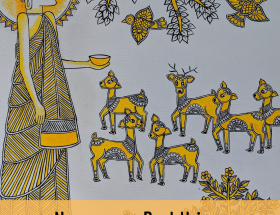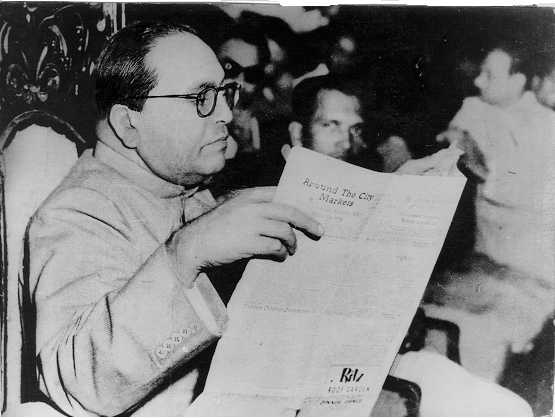Gaurav Kawalkar
Abstract
The marginalization of street vendors in Panvel, a city in the Raigad district of Maharashtra, is examined in the paper. In India’s informal economy, street vendors are the one of most marginalized urban groups. India’s economy comprises the formal and informal sectors, with more than ninety percent of the workforce in the informal one. This study will draw attention to the vicious cycle into which communities, families, and individuals working as street vendors fall. They rarely have the chance to break this cycle, and pursue personal development and growth. The study is the result of a month-long, engaged fieldwork. The question of sustainability of the street vendor communities has arisen due to the mismanagement and carelessness of municipal corporation, the department of labor, police extortion, and the unfavorable attitudes of the general public who buy things from them.
Keywords: marginalization, street vendors, sustainability, growth, informal sector.
Panvel Context
Several slum communities in Panvel consist of families of construction and street vendors. Many females of this families do domestic work in the buildings beside the slum. After finishing their domestic duties, some women work as street vendors, which helps them to take care of their family members and access other required resources. There are slum communities with names like Ganesh Nagar, Bhim Nagar, Mata Ramai Nagar, and Panchsheel Nagar. Alongside the entire railway line, one sees bastis mainly constructed of tin.
Introduction
Street vendors are among the most marginalized, deprived, and vulnerable segments of the urban informal labor market. Informal employment accounts for 92 percent of the Indian labor market.
Street vending is a significant economic activity in the informal sector. Street vendors are self-employed employees in the formal urban industry who sell goods and services on the street without a permanent built-up structure (NPUSV 2006)
Street vendors are self-employed businesspeople who sell their items in the open air rather than in a closed shop or store. Street vendors sell items on the road or walkways from stands, pushcarts, baskets, or makeshift structures covered with tarpaulin sheets. They can be stationary or mobile, depending on whether they stay in one location throughout the day, or move from one place to another according to the time of day.
Street vendors contribute significantly to India’s urban economy by providing jobs, money, and other goods. They sell a variety of goods, including clothing and hosiery, leather items, molded plastic goods, and numerous household essentials, all of which are produced in small-scale or home-based companies employing a significant number of people (Bhowmik, 2001)
For the street vendors, the Street Vendors (Protection of Livelihood and Regulation of Street Vending) Act 2014 entered into force on March 4, 2014. The Street Vendors Act 2014 aims to protect street vendors’ livelihoods by providing them with a safe and secure environment in which to conduct their business without fear of harassment, eviction, or extortion from police and municipal officials, while also regulating street vending activity in line with management of public spaces and traffic.
Without question, the SVA is a genuinely innovative solution to the challenge of reconciling hawkers’ livelihood rights with the right of pedestrians and cars to unrestricted movement. But fully implementing the act has yet to take place properly, and the loopholes have to be highlighted, and they have been discussed further in the article. The legislation establishes four fundamental provisions: first, a survey of all existing hawkers will be conducted, which we hardly see. Second, certificates of vending will be issued to all existing hawkers identified in the study instead of licenses; third, vending and non-vending zones will be demarcated, with all hawkers accommodated in the vending zones; and fourth, no hawker will be evicted from their spot unless and until the survey is completed and certificates of vending are issued.
The people are getting into the informal sector
Farmers’ lives are frequently impacted by climate change. This affects the lives of families that rely on crops and farms. In addition, they need to find a suitable resource for themselves and their family. To meet demand, most individuals travel to cities in pursuit of a reliable and consistent source of income and a better standard of living. Another explanation is the Indian society’s structure and the myriad inequities we experience daily. Furthermore, Dr. Babasaheb Ambedkar questioned, “What is a village but a den of ignorance, narrow-mindedness, and communalism?” As a result, he advocated for relocation to cities.
As India’s industrialization expanded, the demand for workers and laborers increased dramatically, and a considerable section of the lower caste population began migrating to cities. Another factor driving underprivileged people to migrate was the unequal allocation of land resources. In such a situation, they were counseled to relocate to the towns and this provided renewed hope for improved job options, freedom, and self-esteem.
The cycle of marginalization
Markets are where people gather more frequently and buy the goods street vendors sell. As people migrate from rural to new towns, most sell on the street, putting up their little vending places. The municipal corporation allows market vending stalls and issues the vendors’ certificates. They are sometimes granted 5 to 6-foot spots to sell goods. However, street sellers frequently encounter eviction (due to traffic congestion), police beatings, harassment by authority officers, and administrative officers dumping their goods and products. Sometimes, the buyers only complain about them to authorities.
The males in most families is involved in construction jobs. They are paid daily or weekly, according to a contract with the site’s supervisors. Most construction workers face harassment from supervisors, and they do not often receive their pay or salaries despite working for more than a month, sometimes two or three months. The persistent sufferings and economic crises force the family’s females to leave the house and work as street vendors or domestic workers. These leaves most of the young population alone in the absence of parents.
Various departments have particular roles to perform within their respective territories. It isn’t easy to sell your goods to customers if you are in the street vending activities; and if it is a female seller, it becomes difficult for women to sell their wares on the street. They have to deal with
aggression and sometimes harassment from buyers; they face many abusive words daily. Where do the departments which aims to safeguard women when such things happen in the open market, go?
The big question is whether the existing act is followed correctly. Also, how well do the people in the system understand it? We expect fulfillment of their responsibility by the administrative system. Do they remember it correctly? According to the report, nearly 95% of street sellers do not even know about this act. Then whose responsibility is this, to reach out to people to bringing about awareness? No, they are not doing it. However, in Panvel, NGOs and others who engage with the informal sector know the law, create awareness and register people under it. So, who do we need to critique and question? But what does municipal corporation do? They just set the target to achieve the number of registrations, and once it is achieved, they don’t care about anything else.
Numerous loopholes in the municipal corporation’s and department’s operations must be addressed. The corporation provided a location where sellers frequently set up their stalls; people grumbled about the traffic and crowded public places. The monthly earnings of street sellers in the city range from 7,000 to 9,000. Each month the vendors have to undergo forced extortion. Does the corporation take strict measures on this? No. The municipal corporation of the city has to be concerned about this. The department named National Urban Livelihoods Mission seeks to improve the neighborhoods of street vendors. Is there a website where they can file a complaint and register? This tremendously impacts the lives and livelihoods of the street vendors’ communities; to sustain it and to get more income, two or more individuals from the same family should be involved in this activity.
There are numerous families where the father works in construction and the female works in vending. Because the elder family members are involved in their regular tasks for 12 to 14 hours a day, they pay less attention to their children and their conduct. Even though they go to school, there is no one to watch over them; no one is left to look after whether the daughter or son attends school regularly or whether he/she is going in the wrong direction. This has changed children’s lives from twelve to adulthood; many are involved in activities that are neither good for their health nor appropriate for the community. This has made them uninterested in education, and most have lost interest in pursuing further education. However, after education stops, and when the time comes to earn, they are left with only the sector in which their parents live their life, i.e., the informal sector. The informal sector’s cycle continues, and the process repeats itself. Because the criteria or skills for a skills-based job and other eligibility are rarely observed in the community, the people who purchase goods from such merchants are, to some extent, accountable for the cycle that repeats itself. Because we, the general people, frequently complain to the authorities about the vendors because of the difficulties they cause us. We are the only ones that buy the most products from the vendors. Because 80 to 85% of India’s population earns less than 20,000 per month (state of inequality in India report), going to the mall and purchasing an item at a higher price is not affordable. When we go to the supermarket or the mall, we have to pay the original MRP, although the same items can be purchased for a lower price from street vendors.
Before complaining, it is necessary to know more about life about workers in the one field of the informal sector. One complaint to the authorities can cause significant loss to a worker’s family. We frequently refer to them as illegal and committing illegal actions (SEVA); we need to stop this; we do not have the right to call them by such names; they have rights and are all legal under the constitution. Article 14 of the constitution states that equality before the law is guaranteed, and provides for the defense of the rights of vendors. Article 19(1)(9) grants the right to practice any profession, while Article 21 protects life and liberty.
Conclusion
This is the vast and vicious cycle I mentioned earlier in the article. This is common throughout India in the informal industry. In these circumstances, the civic authority in the individual city bears primary responsibility. Every department has been assigned a job and should know its commitment and ways to carry it out. Along with this, not just the formation of the union but the development of a union is required, which will look after the betterment of the communities from the policies and governance perspectives and their improvisation whenever needed. Group formation of some rational minds needs to take place; the young must understand their obligation to themselves and their group; unless and until youth rise, we will not be able to see the best frame out of it, and their devotion will lift them out of this marginalized cycle.
~
References
Thomas, R. B. (2002). Exploring women’s daily lives and participation in the informal labor market in Mumbai, India. jstor.
Waghmare, A. G. (06 Nov 2021). The Plight of Street Vendors in India. EPW.
Bhowmik, S. K. (19 April 2003). National Policy for Street vendors. EPW.
~~~
Gaurav Kawalkar is a student of Master of Arts (Social Work) in Dalit and Tribal Studies and Action from Tata Institute of Social Sciences, Mumbai. HIs areas of interest include caste, structural inequalities and culture. He can be contacted at: gauravkawalkar1999@gmail.com










